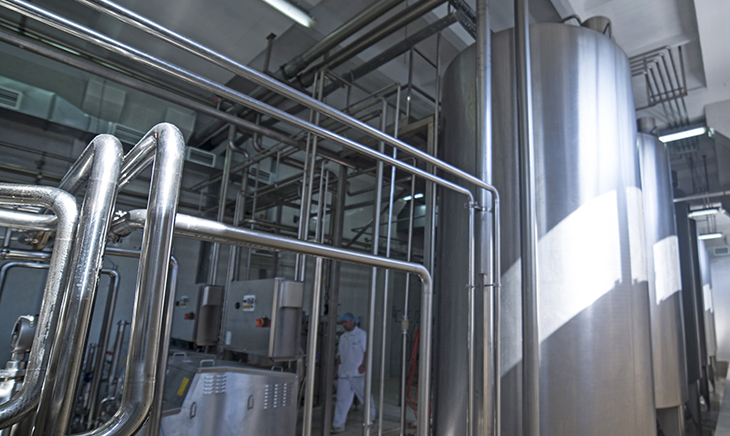Technology and Innovation
We use the latest production technologies and equipment which enable us to produce the best natural egg products in the market place.
- Step 1
- Step 2
- Step 3
- Step 4
- Step 5
- Step 6
Heating the eggs and loading them on to the production lines

Before the start of the technological process, eggs are heated for a day at a temperature of 16-18 oC. This process makes shell removal and the separation of yolk and albumen much easier. Then, the eggs are loaded onto two SAT 8 2002 accumulating tables with the special Optiloader 275/2 loading device. Here, the eggs go through a final examination before breaking.
Washing and breaking the eggs

The selected eggs are then taken onto special lines into the eight-row OptiBreaker egg breaking and separating machines, which can both extract the non-separated mélange and separate the egg mass into yolk and albumin. All devices are equipped with the SW225/8-15/29 CIP-system for cleaning and disinfection.
The eggshell is then pulverized and used in the production of poultry fodder.
Separation and filtration of the egg mass

The non-separated mélange from the separating machines is supplied to special reservoirs for cooling and storage. For the production of yolk and white powder, the egg mass is divided into yolk and albumen. After being broken, the eggs are transferred to separating cups. The separation process is controlled by electronic scanners that detect the presence of albumen in yolk and vice-versa. If the two mix, the whole mass is poured into a tank for non-separated mélange.
The egg mass then passes through SAF 8000 filters that eliminate incidental impurities and maximize the hygienic quality of the product.
Cooling and reservation

The filtered egg mass is delivered to a three-segment plate heat exchanger, where each product passes through a separate segment in order to suppress microorganisms. The prepared sterilized mass is collected for temporary storage in OVOTANK 12000 C-C reservoirs equipped with agitators, level probes, thermostats and cooling system.
Pasteurization

The processed mélange, yolk, or albumen is pasteurized using a SANOMIDI 5000 pasteurizer. The electronic control system enables full management of the process. It includes SANOMIDI software for launch preparation, temperature control and temperature regime programming, cleaning and prevention of emergency situations. An Ecograph three-channel digital paperless temperature recorder notes and saves all information about the pasteurization process electronically.
The production cycle of the liquid albumen includes several additional stages, including stabilization of the albumen pH-level and its fermentation in the special OVOTANK 30000 C-C reservoirs for 10 to 16 hours before cooling. Moreover, the sugar-free egg white powder is pasteurized after drying in the heat chambers for 10 to 20 days at 60 to 80 oC and at a relative air humidity of 40% to 45%. All production processes are constantly monitored in the plant’s laboratories.
Drying and packaging

After the storage period, the pasteurized albumen, yolk and mélange is delivered to a gas-powered Gentle Air Spray Dryer model SGA 225. First, the product is heated to 45-48 oC and then supplied under pressure into a heating chamber. The dried mass passes through filters where a vibrating sifter separates out large particles. At the final stage of the technological process, the produced powder is supplied to a SSPF 600 packaging machine for weighting and packaging into 20 to 25 kg boxes with inserted plastic bags.


